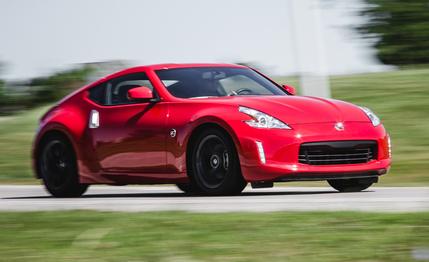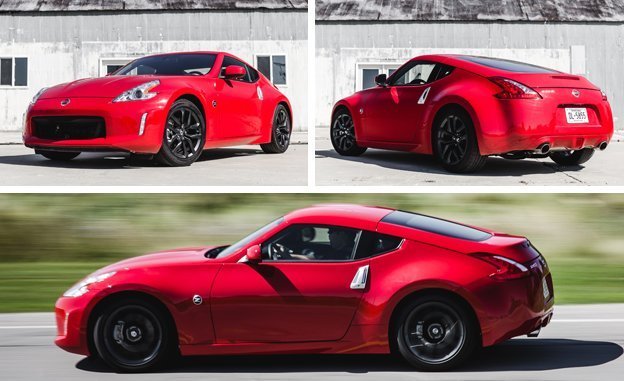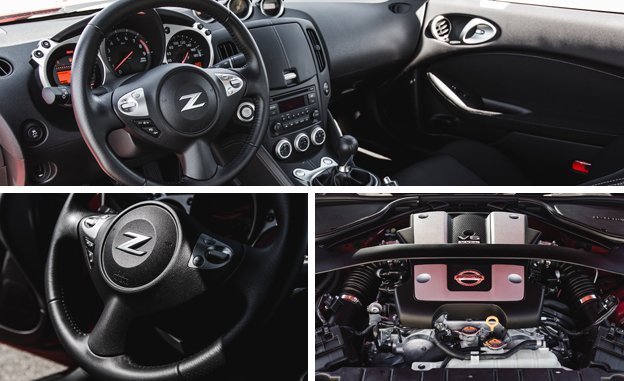
 Instrumented Test
Instrumented Test
Other than swapping an ashtray for a cup holder and Datsun badges for Nissan medallions, the Z-car has harkened to the same formula for 46 years. A popularly priced two-seat GT with six-cylinders, a long hood, a short deck, a fastback roofline, and a rear hatch aptly describes both 2016 and 1970 models. That’s Corvette-caliber staying power.
Over that time, the Z-car’s contemporaries have moved on. Classmates from the 1970s and 1980s such as the Toyota Supra and the Mazda RX-7 scabbarded their samurai swords, and the Porsche 944/968 and Alfa Romeo GTV-6 ascended to autobahn heaven years ago. Even at Nissan, the Z doesn’t bathe in the spotlight as it once did; the performance stage is owned by the technoid (and three times more expensive) GT-R.


In a sense, driving the 2016 Nissan 370Z is like bumping into an old friend from the neighborhood. “Vinnie, you haven’t changed a bit!” For now at least, the 370Z does it the tried-and-true way, with a large-displacement, port-injected, naturally aspirated V-6—no turbocharged, supercharged, or electrified anything here. The 3.7-liter VQ37VHR six shared with the Infiniti Q50 and Q70 is very flexible and has ample torque over a wide rpm range. It’ll lug down to 1000 rpm under load in fifth or sixth gear without chugging and, when you light the fuse, provide a charge to 60 mph from rest in 5.1 seconds. That’s quick enough to out-drag the base Porsche Cayman (5.3 seconds).
But the gray is showing at the Z’s temples. The VQ gets grainy at higher revs and the sound (at least of the $30,815 base 370Z we tested) isn’t very zoomy. Spend more for the Touring, Sport, or Sport Tech trims and active noise cancellation quells the coarseness while active sound enhancement emphasizes the melodious stuff via the standard Bose premium sound system. Getting underway, clutch takeup is linear and predictable and the short-throw shifter on the Z’s close-ratio six-speed manual operates with precision. We did, however, notice some annoying fore/aft driveline lash in our base 370Z test car when tipping in and lifting off the throttle; the automatic downshift rev-matching of the Sport and Sport Tech models may help mitigate that.


Still, the 370Z’s basic no-nonsense goodness and bang for the buck can’t be denied. Even though steering effort can be a little heavy on-center, the Z tracks straight and true; pick a line through a corner and the car accurately and obediently gets you there without drama or fiddling. Brake response, even with the smaller units on the base car, is taut and easy to modulate. At 0.90 g, ultimate grip with the 225/50R-18 front and 245/45R-18 rear Yokohama Advan Sports can’t rival the Cayman’s 1.03 g of stick, and the Z’s 167-foot stop from 70 mph can’t top the Porsche’s phenomenal 148-foot figure. But at an as-tested price of $30,940, the base 370Z is barely half the tariff of Porsche’s least-expensive mid-engine coupe. Or looking at it another way, the base 370Z represents a chance to score a dedicated sports car with superior performance stats for the same or less money than a lightly optioned Ford Mustang EcoBoost four-cylinder.
Ever-tightening fuel-economy regulations may force a turbo-four under the Z’s hood in its next generation, so before sports cars become the high-tech playthings of the idle rich you might want to taste test the original-recipe Z. Vinnie would approve.